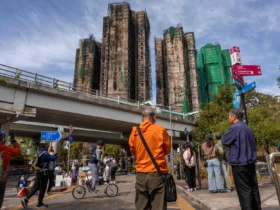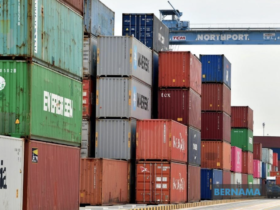BEIJING, April 24 – Malaysia holds a strong potential to serve as a regional catalyst in semiconductor innovation and infrastructure connectivity, offering a strategic gateway for enhanced ASEAN-China economic integration.
According to Associate Professor of Applied Economics at the Guanghua School of Management in Peking University, Dr Yao Tang, Malaysia has a well-established semiconductor sector and ongoing infrastructure development, including rail connectivity as key assets in supporting deeper economic collaboration between China and ASEAN.
“Malaysia has a pretty advanced semiconductor sector. I think there’s a lot of potential for photo integration in semiconductors and generally in IT technology as well,” he told Bernama.
Yao said such capabilities were critical as both China and ASEAN pursue more integrated economic models in a region which is home to more than two billion people and a combined annual growth rate of approximately five per cent.
“This fast-growing region, namely ASEAN plus China will likely double in economic size over the next decade. With this growth, its influence on the global economy will become far more significant,” he said, adding that it could reduce reliance on external factors and mitigate uncertainties from outside powers.
Malaysia’s semiconductor exports were robust in 2024, reaching about US$130 billion (RM575 billion).
Malaysia contributes about 13 per cent of the world’s semiconductor testing and packaging, with increasing investments in integrated circuit (IC) design aimed at establishing a major IC design hub.
Additionally, the country holds about seven per cent of the global semiconductor market, with aspirations to double this share to 14 per cent by 2029 through strategic investments and advancements in chip design.
On infrastructure, Yao pointed out the importance of enhancing railway and transport links to support regional mobility, trade and economic synergy.
“There is already effort to connect better through railway and other infrastructure. This all points towards a better regional integration,” he said.
He also underscored the need for long-term strategic planning and alignment across countries within the region, noting that coordinated investment in green energy and AI could strengthen shared prosperity.
On trade dynamics, Yao stressed the need for China to evolve from its traditional export-driven model toward a more balanced approach that supports production localisation across Southeast Asia, including Malaysia.
“Currently, China exports a lot of finished products, which creates trade imbalance. By relocating some production capacities abroad, there would be more local value creation.
“China needs to invest more abroad, so capacity gets spread and shared. This would help share growth and technology, particularly in areas that need industrial development,” he explained.
Yao also noted that import diversification, especially in agricultural and cultural products would further balance trade, in which mechanism such as the Regional Comprehensive Economic Partnership (RCEP) serves as vehicle to promote such exchanges.
“There is growing demand for goods from ASEAN countries and with reduced tariffs and trade barriers, China could import more and not just export more,” he said.
On the global stage, he emphasised that China should avoid seeking dominance and instead aim to be a responsible economic leader.
“You can be the largest player, but you must also be responsible and mindful. That would be the only sustainable path forward,” he added.


-加码-scaled.jpg)

-加码-scaled.jpg)

















Leave a Reply